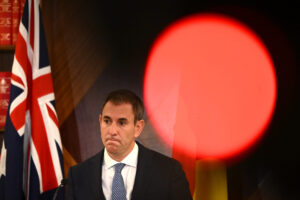It is odd that many who talk about wanting more tax revenue to come from the GST would balk at the easiest services to broaden it to like private schools and private health insurance.
The GST is failing. It was meant to give the states their own independent source of revenue and in the process make them less financially dependent on the federal government.
The problem is that GST revenue is growing slower than the economy and so it has not kept up with the growing costs of providing hospitals, schools, roads and all the other vital services that the states provide.
Australia Institute research has shown that if GST revenue had kept up with economic growth it would have collected an additional $231 billion since it was enacted and $22 billion in 2023-24 alone.
Having an income that grows slower than prices is something that many households have recently experienced. And just like households, the states have found their budgets under increasing pressure.
Early on, states were able to make cutbacks to make ends meet, but over the last 25 years we have seen their collective budgets move from surplus to deficit. At the same time all the cost-cutting has degraded the services they provide.
This has been a lose-lose for Australians.
Some have called for the GST to be increased or broadened to raise more revenue. But that will slug the poor more than the wealthy because the GST is what economists call a regressive tax. But there are other solutions. We could broaden the GST without disproportionately impacting the poor by being selective on what we broaden it to.
Scrapping the distorting capital gains tax discount would not only collect tens of billions of dollars in extra revenue for the states but would also make housing more affordable.
At the moment, household spending on private schools and private health insurance is exempt from the GST. These services are overwhelmingly used by high-income earners. Extending the GST to them would raise an additional $1.8 billion per year, with about $800 million of that coming from the top 20 per cent of income earners.
There has been pushback from the expected sources. But this is what broadening the GST means. It is odd that many who talk about wanting more tax revenue to come from the GST would baulk at the easiest services to broaden it, too.
An extra $1.8 billion a year from broadening the GST to private schools and private health insurance is a lot, but it doesn’t come close to plugging the $22 billion hole left by a slow-growing GST.
To fill that gap, we need to think more laterally.
When the GST first came into effect 25 years ago, the federal government agreed that all the revenue collected from the new tax would go to the states. This is not the only tax that has to work this way. Other taxes, along with the GST could be added to the pool of revenue going to the states.
This could also be used to implement some overdue tax reform.
A federal government levy could be imposed on liquefied national gas exports, with the revenue going to the states. Scrapping the distorting capital gains tax discount would not only collect tens of billions of dollars in extra revenue for the states but would also make housing more affordable.
As the Commonwealth Bank pointed out in its submission to the productivity roundtable, we need to tax wealth better. A new wealth tax, along with the GST, could be added to the pool of money going to the states.
Our federation would work much better if the states had their own source of revenue that is sufficient to meet their needs and grows with the rest of the economy. If we want first-class government services, we need a system that will deliver them.
Between the Lines Newsletter
The biggest stories and the best analysis from the team at the Australia Institute, delivered to your inbox every fortnight.
You might also like
Taxpayers Subsidising Private School Luxuries
As Australia enters a new school year, a submission from The Australia Institute highlights the growing disparity between public and private school funding, revealing that taxpayers are helping fund lavish private school facilities and the high salaries of private school principals. In a submission to a New South Wales inquiry into private school profits, the
Tax reform isn’t hard – slug multinationals and subsidise the things we want more of
Taxes are the price we pay for civilisation, but they are also a tool we can use to change the shape of our economy, not just its size.
Private health insurance is for the rich – the rest would rather better public health
ATO figures show that private health insurance is favoured by the rich and it should be subject to GST



